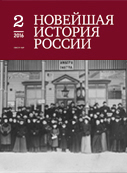«Новый Парадиз»: институциональные аспекты деятельности кинематографических театров российской провинции начала ХХ в.
«A New Paradise»: Institutional Aspects of Cinemas in a Russian Province During the Early 20th Century
Author(s): V. V. UstyugovaSubject(s): History
Published by: Издательство Исторического факультета СПбГУ
Keywords: cinema; cinematography theaters; everyday life; mass culture; modernity; censorship
Summary/Abstract: The article looks at the institutional history of cinemas at the beginning of Russia’s twentieth century. With provincial Perm as its backdrop, it examines the transformation of the “Cinema of Attractions” into the cinema of “Narrative Integration”— a time when temporary movie settings changed into theaters built in the Empire style and c inematographers themselves developed the idea of “movie production—distribution agencies—cinemas”. While members of the lower middle class as well as merchants from within and without owned Perm’s cinemas, peasants, tradesmen, and saving and loan societies opened cinemas in areas surrounding the city. As movie-going became popular, emotion itself became a product, and marketing involving brands and advertising infiltrated the amusement industry as well. Interactions with representatives of the authorities, meanwhile, involved issues of fire safety, censorship, and taxation policy. The number of electro-theaters in Russia grew together with the “peaceful atmosphere”in the society after the 1905 Revolution. Later, during the First World War, movie-going became a universal way to hide from reality and to distract oneself from times of stress. The statistics surrounding cinemas, their numbers of attendees and their profitability for example, clearly illustrate the social promotion of movie-going in Russia at this time
Journal: Новейшая история России
- Issue Year: 6/2016
- Issue No: 16
- Page Range: 217-235
- Page Count: 19
- Language: Russian

